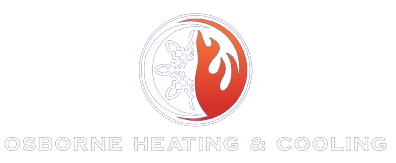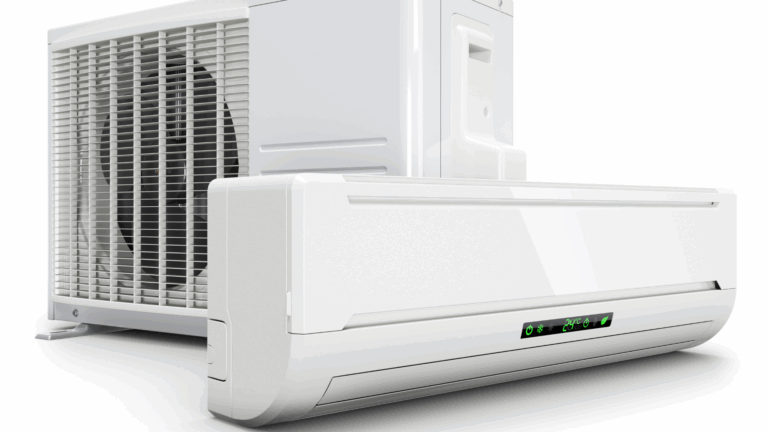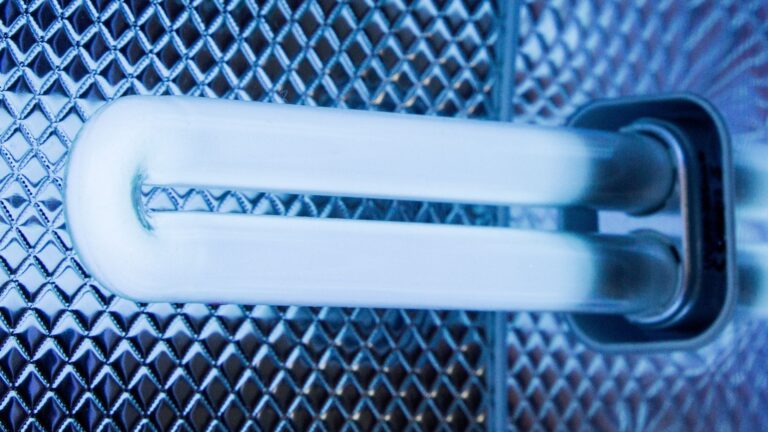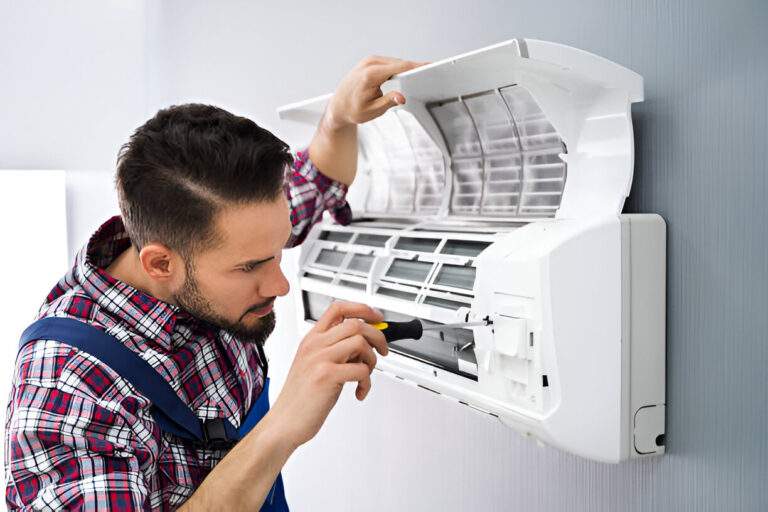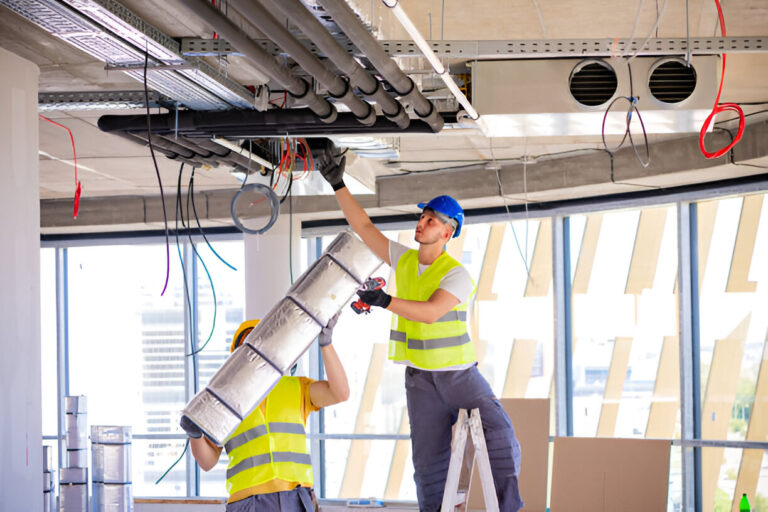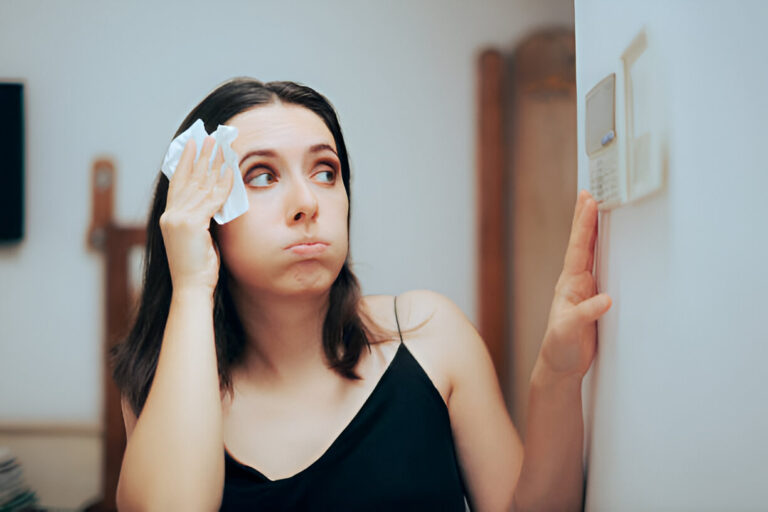HVAC 101: Heating & Cooling Basics for New Homeowners
Welcome home! If you just got the keys (congrats!) or you’re about to, your HVAC system will be the unsung hero that keeps the place comfy, and a major line item on your energy bill. In many homes, heating and cooling make up the largest share of energy costs, often close to half of what you spend on utilities, so even small improvements can pay off.
What “HVAC” actually is (and how it works)
HVAC = Heating, Ventilation, and Air Conditioning.
- Heating adds heat (furnace, boiler, or heat pump in heating mode).
- Cooling removes heat (central AC or heat pump in cooling mode).
- Ventilation brings in fresh air and moves stale/dirty air out (natural, mechanical, or via dedicated ventilation systems).
In a typical split central AC or heat pump, an indoor coil (evaporator) absorbs heat from indoor air and an outdoor coil (condenser) rejects that heat outside, with a compressor pumping refrigerant between the two. That refrigerant is the “heat shuttle.” The Department of Energy’s Energy.gov
Because air is moving through your ducts whenever your system runs, filters matter for both efficiency and indoor air quality (IAQ). The EPA notes that higher-rated filters (MERV 13 and above) capture much finer particles, use the highest rating your system and fan can handle.
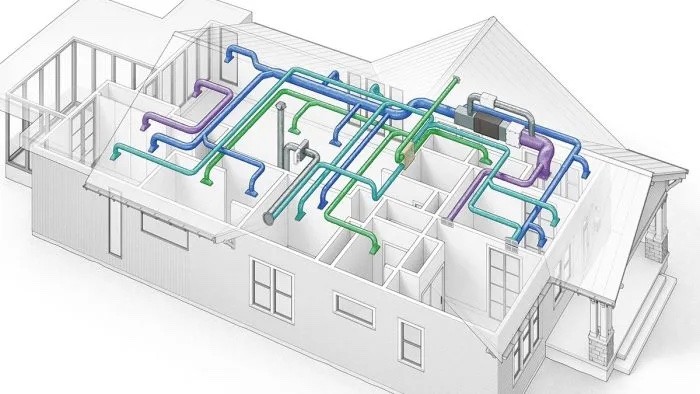
The big three system types you’ll meet
1) Furnaces (most common in colder climates)
Gas or oil furnaces burn fuel to create heat. Their efficiency is labeled AFUE (Annual Fuel Utilization Efficiency). A 95% AFUE furnace turns 95% of the fuel’s energy into usable heat across a season. ENERGY STAR furnaces typically deliver notable savings versus older, less efficient models when installed correctly. ENERGY STAR
2) Boilers (baseboards/radiators)
Boilers heat water that circulates through radiators or radiant floors. They’re measured with AFUE as well. While wonderfully comfortable, distribution is via water rather than ducts, so adding central AC later usually means separate ductless systems or fan coils. (Energy Saver has a practical guide to heating equipment pros/cons.)
3) Heat pumps (the all-season multitaskers)
Air-source heat pumps heat and cool by moving heat rather than making it. In summer, they work like ACs; in winter, they run in reverse, extracting heat from outdoor air, even when it’s cold. Modern “cold-climate” models have strong performance at low temperatures and are gaining traction as efficient, all-electric options.
Efficiency ratings decoded (SEER2, EER2, HSPF2, AFUE)
As of January 2023, new U.S. central ACs and heat pumps are rated with SEER2/EER2/HSPF2. The “2” indicates updated test procedures that better reflect real-world conditions (including external static pressure from ductwork).
- SEER2: seasonal cooling efficiency.
- EER2: snapshot cooling efficiency at a set outdoor temperature.
- HSPF2: seasonal heating efficiency (for heat pumps).
- AFUE: seasonal fuel efficiency (for furnaces/boilers).
Higher numbers (except for energy use metrics) generally mean better efficiency and lower operating costs.
If your AC or heat pump is 10–15+ years old, replacing it with a modern, properly sized, high-efficiency unit can significantly cut cooling costs, Energy Saver notes that upgrading from older systems and pairing with proper installation/duct improvements can yield substantial savings.
Sizing: why “bigger” is not better
Right-sizing isn’t guesswork. Reputable contractors perform Manual J load calculations (home-by-home heat gain/loss), Manual S for equipment selection, and Manual D for duct design. Skipping these can lead to short-cycling (clammy summers, drafty winters), higher bills, and premature wear. Ask specifically for ACCA Manual J/S/D in your quotes.
Red flags: a quote based only on square footage, or “we’ll just match the old tonnage.” Homes change (windows, insulation, air sealing), and your old system may have been oversized from day one.
Ducts: the hidden energy leak (and comfort killer)
Leaky or poorly insulated ducts often waste 20–30% of the air your system pushes, air you already paid to heat or cool, especially when ducts run through attics or crawlspaces. Sealing and insulating ducts can boost comfort and cut bills.
What to ask for: mastic or UL-listed tapes (not cloth “duct tape”), duct insulation, and a measured duct leakage test if feasible. ENERGY STAR’s duct sealing guidance is a good homeowner checklist.
Ventilation & indoor air quality (IAQ): breathe easy
Indoor air can be 2–5× more polluted than outdoor air, depending on activities and ventilation. That’s why ventilation and filtration matter.
Quick wins:
- Filters: Upgrade to MERV 13 (or the highest your blower & filter slot can handle) for better capture of small particles (including many allergens and fine smoke). Check pressure drop and ensure your system can maintain airflow.
- Run-time for filtration: During wildfire smoke or allergy spikes, running the fan to circulate through a good filter can help. EPA and AirNow note high-efficiency filters (MERV 13–16) can reduce indoor particles dramatically
- Dedicated ventilation: Balanced ventilation (e.g., ERV/HRV) or a properly set mechanical fresh-air system (per builder specs) improves IAQ consistently, don’t disable it.
Smart controls & simple thermostat habits
Setbacks and schedules work. Energy Saver recommends setting back your thermostat 7–10°F for 8 hours to save up to ~10% annually on heating and cooling. If your schedule is predictable, programmable or smart thermostats make this automatic.
How much do “smart” thermostats save? Real-world data varies by home and climate, but a widely cited Nest analysis found average savings of 10–12% on heating and ~15% on cooling. Your mileage may vary, but set-and-forget scheduling plus occupancy features help many households.
Maintenance that actually matters (and what your tech should do)
Neglect is expensive. Dirty filters and coils reduce airflow and heat transfer, driving up energy use and shortening equipment life. Energy Saver and ENERGY STAR emphasize regular filter changes and annual pro checkups before peak seasons.
DIY, monthly/quarterly
- Inspect/replace filters (more often with pets, dust, or construction).
- Keep supply/return vents clear.
- Keep the outdoor unit free of leaves/debris; maintain clearance for airflow.
- Gently rinse outdoor coil fins if dusty (power washing can damage fins).
Pro tune-up (what to expect)
A qualified technician should: verify refrigerant charge, measure airflow, clean coils, check electrical connections, inspect the blower, confirm safe combustion (for furnaces), and look for duct leakage. For heat pumps, Energy Saver lists a detailed checklist that’s worth printing.
Tip: Look for NATE-certified technicians (North American Technician Excellence) and ACCA member contractors, these organizations set competency and quality benchmarks in the industry.
Refrigerants & the ongoing transition (what homeowners should know)
Under the AIM Act, the U.S. is phasing down high global-warming-potential HFC refrigerants. The EPA’s Technology Transitions rule and HFC phasedown schedule are pushing manufacturers toward lower-GWP refrigerants (e.g., R-32, R-454B) in new AC/heat pump equipment over the next few years, with key market changes in the mid-2020s. Practically, you’ll see newer models charged with these alternatives, which may have slightly different servicing considerations. Your existing R-410A system can still be serviced; the shift mainly affects new equipment.
HVAC System Cost Breakdown (2025 Averages)
| System Type | Installation Cost Range | Average Lifespan | Annual Maintenance Cost | Energy Efficiency Rating | Notes |
| Central AC (3–5 ton) | $3,900 – $8,000 | 12–15 years | $150 – $300 | SEER2 (13.4–21+) | Higher SEER2 units lower cooling costs by 20–40%. |
| Furnace (Gas/Electric) | $2,800 – $6,900 | 15–20 years | $150 – $300 | AFUE (80%–98%) | High-efficiency furnaces save up to 30% on heating bills. |
| Heat Pump (Air Source) | $4,500 – $12,500 | 12–15 years | $200 – $400 | SEER2 (15–21+), HSPF2 (8–10) | Works as both heating & cooling; rebates up to $2,000 available. |
| Boiler (Gas/Oil) | $4,000 – $10,000 | 15–20 years | $200 – $400 | AFUE (80%–95%) | Excellent comfort; requires separate cooling system. |
| Ductless Mini-Split | $3,000 – $10,000 (per system) | 12–15 years | $150 – $300 per unit | SEER2 (16–30+) | Flexible; ideal for additions, zoned comfort, or older homes. |
Incentives & tax credits (2025 snapshot)
Thanks to the Energy Efficient Home Improvement Credit (25C), many homeowners can claim 30% of qualified costs for specific energy upgrades, up to $3,200 per year, with a separate $2,000 annual cap for heat pumps (and certain other items) through 2032. Check the IRS and ENERGY STAR pages for eligibility details and product criteria (some credits require efficiency tiers).
- Heat pumps: Up to $2,000 (30% of costs, subject to caps). ENERGY STAR details annual windows for current rules and links to Form 5695. ENERGY STAR
- Other upgrades (insulation, doors, windows, etc.): typically share the remaining $1,200 annual pool (subject to per-item caps).
- Find local rebates: ENERGY STAR’s Rebate Finder aggregates utility/state programs; many offer extra rebates for high-efficiency ACs/heat pumps and smart thermostats.
Running your system efficiently: quick settings & habits
- Thermostat setpoints: If you like it cooler in summer, offset with ceiling fans so you can raise the setpoint a degree or two without losing comfort; in winter, try incremental setbacks at night. Those 7–10°F for 8 hours savings really add up over the year.
- Airflow: Don’t block supply/return grilles with rugs or furniture. Lower airflow = higher energy use and coil icing risk in cooling. (Energy Saver highlights airflow and filter care as fundamental.)
- Ducts: If parts of the home are always too hot/too cold, investigate duct leakage or balancing before cranking the thermostat. Sealing/upgrading ducts can solve comfort issues at the root.
Seasonal homeowner checklists
Spring (pre-cooling season)
- Replace/upgrade filters (consider MERV 13 if your system can handle it).
- Clear and hose off the outdoor unit fins; trim vegetation around it.
- Book a pro AC/heat pump tune-up before the rush.
- Program cooling schedules (and enable smart features like geofencing).
Fall (pre-heating season)
- Replace filters again (more often if dusty or pet-heavy homes).
- If you have a gas furnace, have a pro check combustion, heat exchanger, and venting.
- Program heating schedules and try overnight setbacks.
- If you use a heat pump, verify defrost functions and outdoor unit drainage are clear.
Any time
- Keep vents/registers unblocked.
- Watch energy bills, unexpected spikes often mean airflow or refrigerant issues.
- Consider an energy audit to find air leaks/insulation gaps that burden HVAC. (Audits may qualify for tax credit up to a cap.)
Common HVAC myths, debunked (briefly)
- “Bigger is better.” Oversized systems short-cycle and feel clammy. Demand Manual J/S/D sizing and design.
- “Close vents to push air to other rooms.” This usually increases duct pressure and leakage; it can degrade comfort and efficiency. Fix the ducts instead.
- “Heat pumps don’t work in the cold.” Modern cold-climate models do, and can be stellar when matched to the home.
- “Filters only protect equipment.” They’re central to IAQ; MERV 13 (when compatible) significantly improves fine-particle capture.
A simple, step-by-step plan for new homeowners
- Find a quality pro: Ask about NATE certification and ACCA membership. Get two to three bids, and ask each to show their Manual J load results.
- Check the ducts: Request duct inspection and sealing quote if your system is older or rooms are uneven.
- Pick the right efficiency: Balance upfront cost vs. energy savings and comfort features (variable-speed fans and compressors reduce noise and humidity swings). Confirm ratings (SEER2/HSPF2/AFUE) and that they meet any rebate thresholds.
- Upgrade filtration: Move to MERV 13 if your blower and filter rack can handle it; otherwise choose the best you can while maintaining airflow.
- Dial in controls: Set schedules or use a smart thermostat; expect meaningful savings just from better control.
Stay Comfortable Year-Round with Osborne Heating & Cooling
From HVAC repairs to energy-efficient upgrades, Osborne Heating & Cooling keeps your home cozy in winter and cool in summer. Trust our licensed experts for reliable, affordable service.
Call 804-985-3057 today to schedule your HVAC service or get a free estimate!
